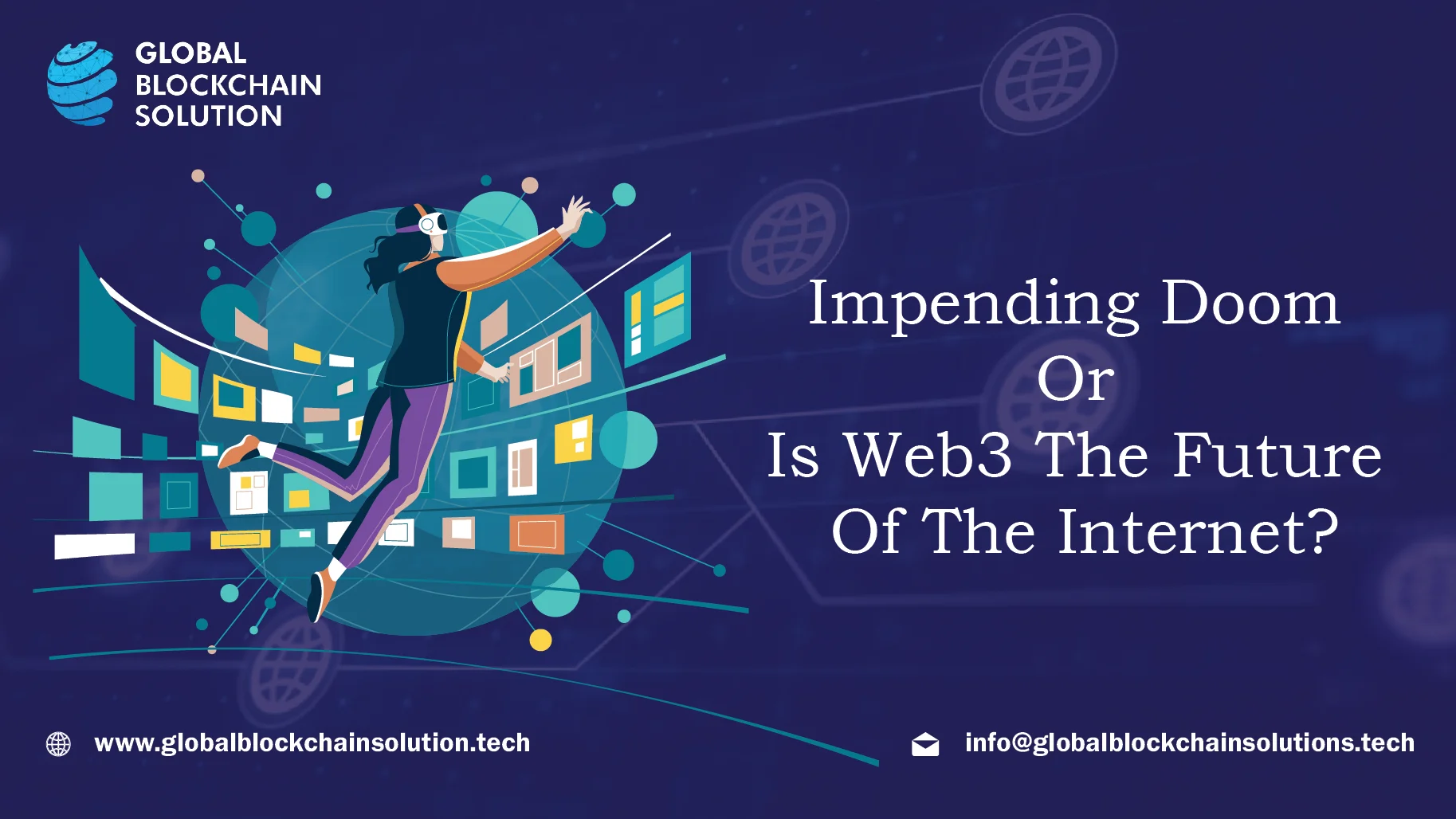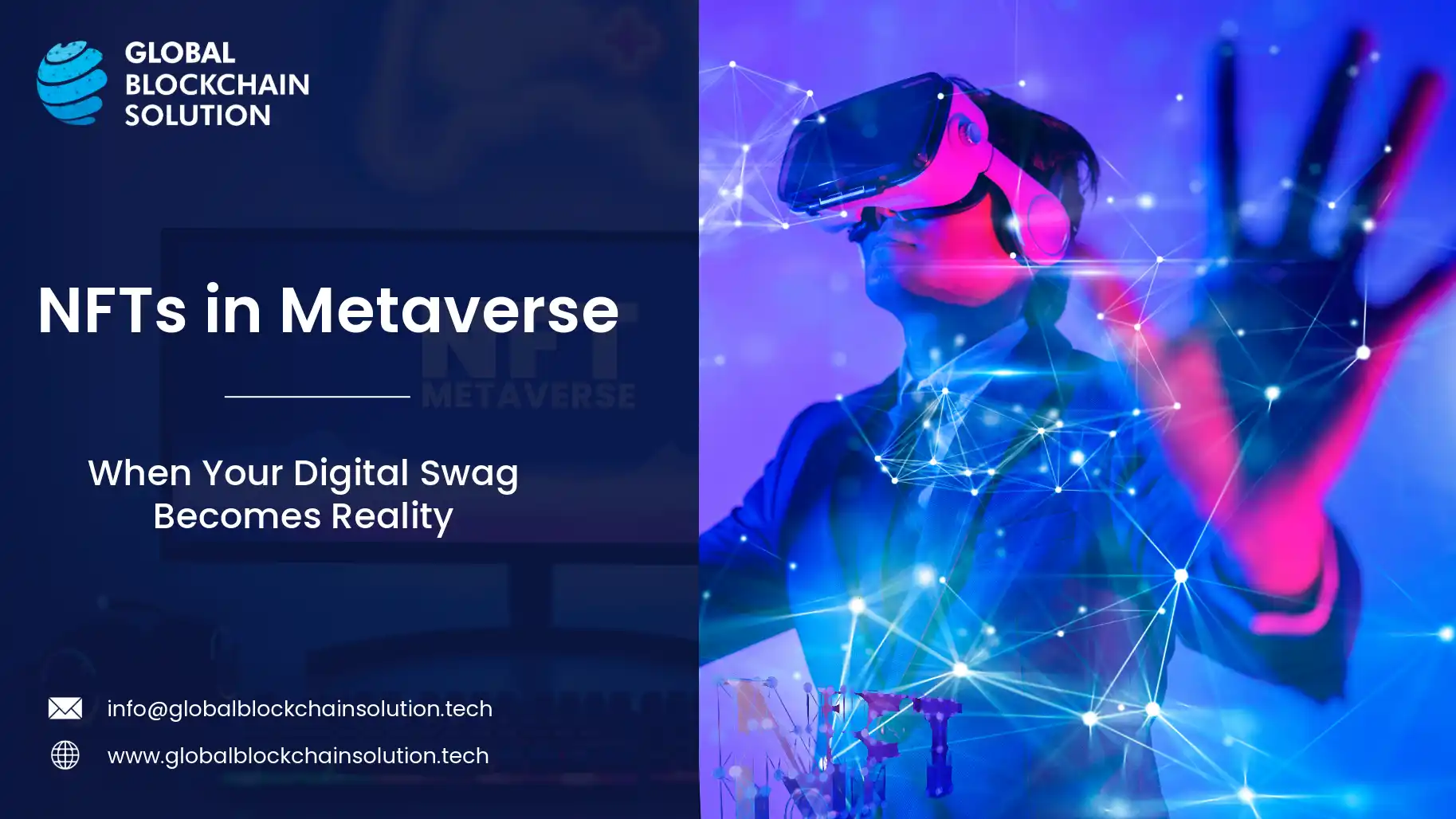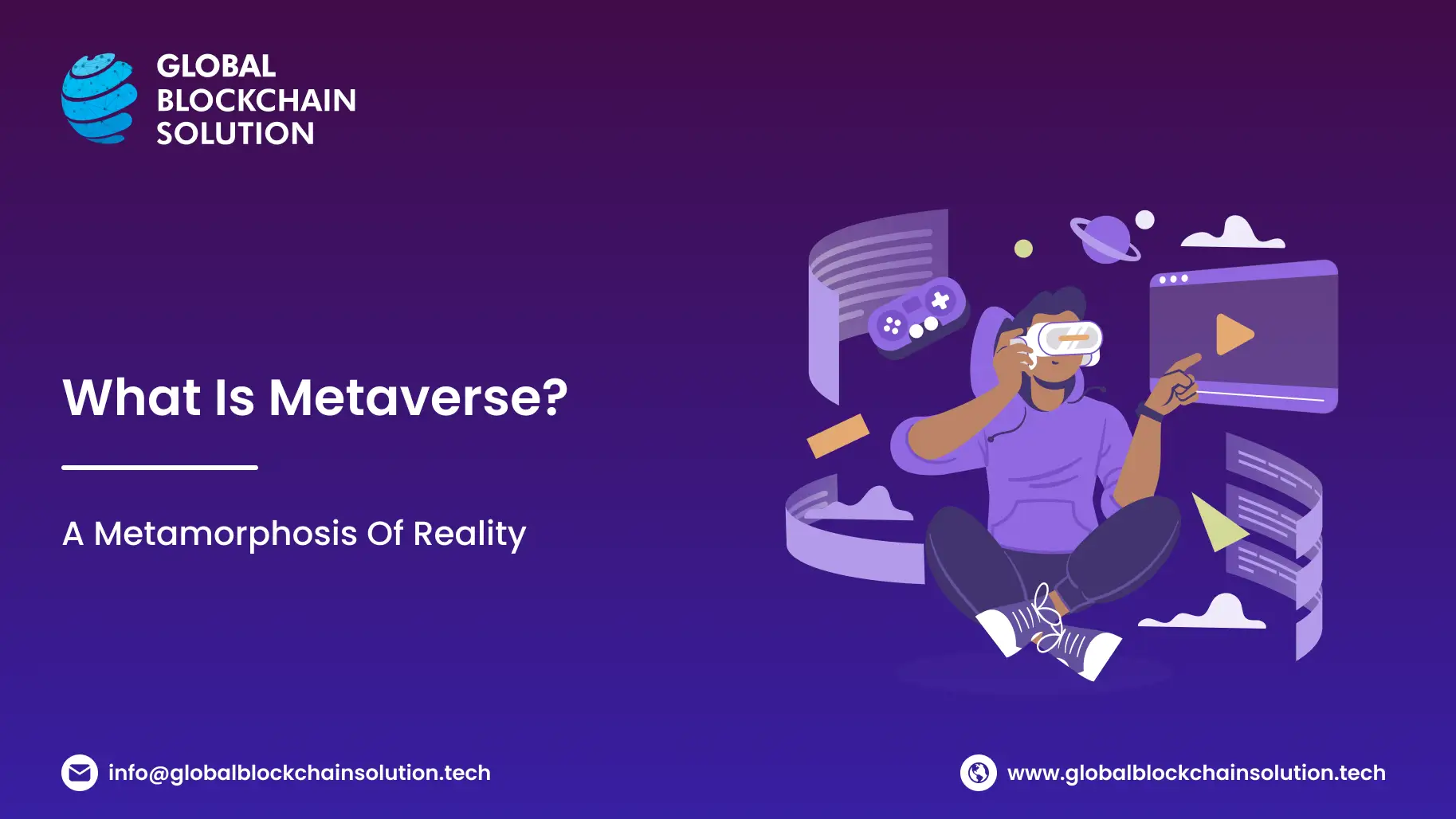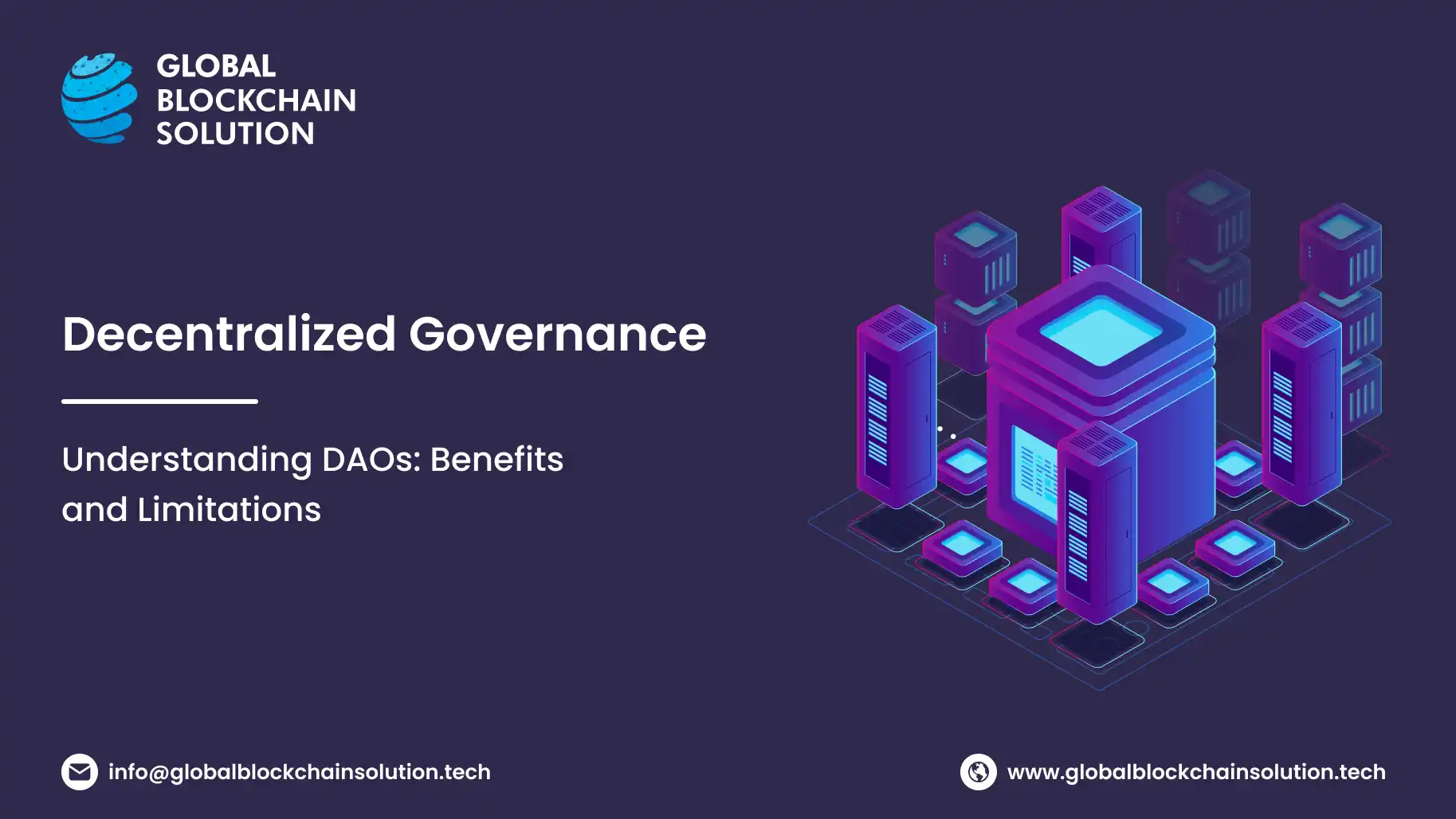Impending Doom or Is Web3 the Future of the Internet?
Remember when "The Social Network" movie came out in 2010 and made the Facebook story legendary? That was all about Web 2.0, where we started to see social media platforms, user-generated content, interactive web experiences, and how all of that changed our lives.

Well, now we're entering a whole new era called Web 3.0.
But, what is Web 3.0? And is this Web3 the future?
Think of it like a decentralized system, powered by blockchain technology, like what we see with cryptocurrencies such as Bitcoin or Ethereum. You may remember how we used Napster to share music files back in the day, or those irresistible torrent downloads. Imagine that level of peer-to-peer sharing, but for everything on the internet.
Trivia: Napster is making its way back with Web 3.0.
In this blog, we will delve briefly into Web 3.0 and discuss whether it is a whimsical idea that will sputter, cough, and die in a few years (or months even) or if is it a revolutionary concept that will twist the very fabric of the internet.
Either way, it is going to be a spectacle to watch (and keep a tab on). So, make sure you read this blog all the way through. At last, we will also discuss whether or not we should ride this wave, especially from a commercial standpoint.
We will try to make this piece as bias-proof as possible.
In a Nutshell: What is Web 3.0?
Web 3.0 is sometimes described as the semantic web, a place where machines can read and understand information as humans do, thus offering an enriched, personalized user experience. You can already experience a glimpse of Web 3.0 in Bing’s AI integration or Google’s Bard integration in Google search.
With our new generative AI experience in Search, you’ll get even more from a single search. You’ll be able to quickly make sense of information with an AI-powered snapshot, pointers to explore more and natural ways to ask. #GoogleIO pic.twitter.com/jgzz97DzEv
— Google (@Google) May 10, 2023
But Web 3.0’s overarching concept goes way beyond just the semantic web. Decentralized internet is its key tenet, which will supposedly shift the internet’s control from a handful to the masses. When we speak of Web 3.0, we can’t leave out blockchain technology, which allows peer-to-peer transactions without the need for a central authority, leading to a more democratic, open, and transparent digital ecosystem.
To fully understand Web 3.0, it's important to look back at the evolution of the internet, starting with Web 1.0 and Web 2.0.
➤ Web 1.0: The Read-Only Web
Web 1.0, the first generation of the World Wide Web, was a static information dump where users could read the information but not interact with it. It was essentially a 'read-only' web with basic HTML pages that were connected via hyperlinks. The first website, launched on August 6, 1991, by Tim Berners-Lee, was a typical example of a Web 1.0 site. It was a simple, text-based site that provided information about the World Wide Web project.
Trivia: You can still visit the first website ever launched on the internet – a rare internet relic – here.
During this era, some major events took place, such as the launch of popular search engines like Yahoo! in 1994 and Google in 1998, making information retrieval easier for users. In 1995, Amazon and eBay were also launched, introducing the concept of online shopping. The internet, as we know it today, started taking shape.
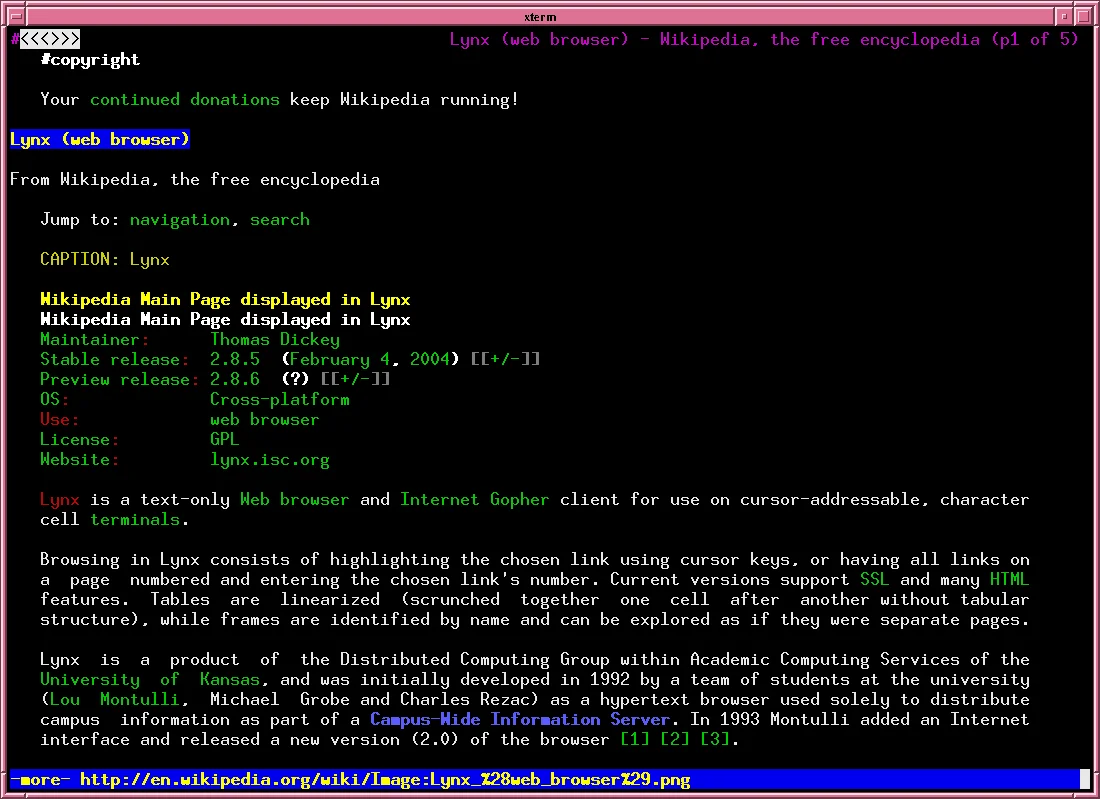
In the 1990s, Web 1.0 demonstrated its need to the world. While the majority of the footfall was commanded by the web browser Netscape Navigator, a few – such as academic users – even accessed the internet via CLI (command-line interface) using browsers like Lynx. But there was still a critical piece of the puzzle missing – “User Experience!”
Note: Graphical websites were live on the internet as far back as 1992. However, they were not as widely used until the widespread adoption of Mosaic (and later Netscape Navigator).
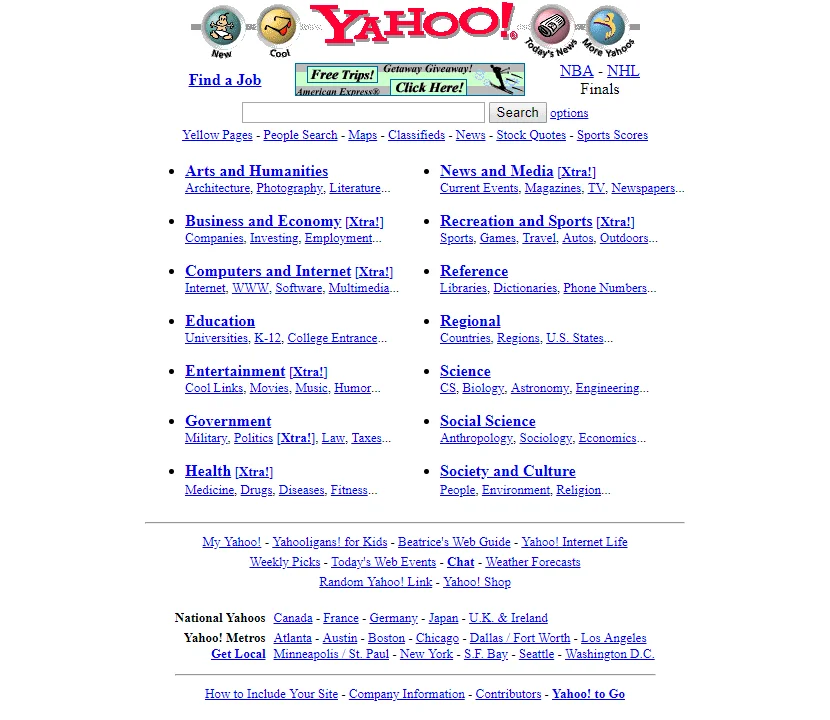
➤ Web 2.0: The Read-Write Web
Somewhere down the line, users started becoming the focal point of all interactions. Broadband internet offered more speed and replaced dial-up connections. This led to the proliferation of visually-stunning websites that could display more than simple text and images. These websites could also handle dynamic interactions.
The shift from static web pages to dynamic content around the early 2000s was revolutionary. It is also characterized by a move towards user-generated content, along with the growth of social networking. This was the “read-write” web, as users could now interact with the web pages, contribute content, and collaborate in real time.
This read-write era marked the launch of Wikipedia in 2001 and the rise of social media platforms like Facebook (launched in 2004) and YouTube (launched in 2005), along with blogging platforms like Blogger and WordPress, gave users the tools to share and connect like never before.
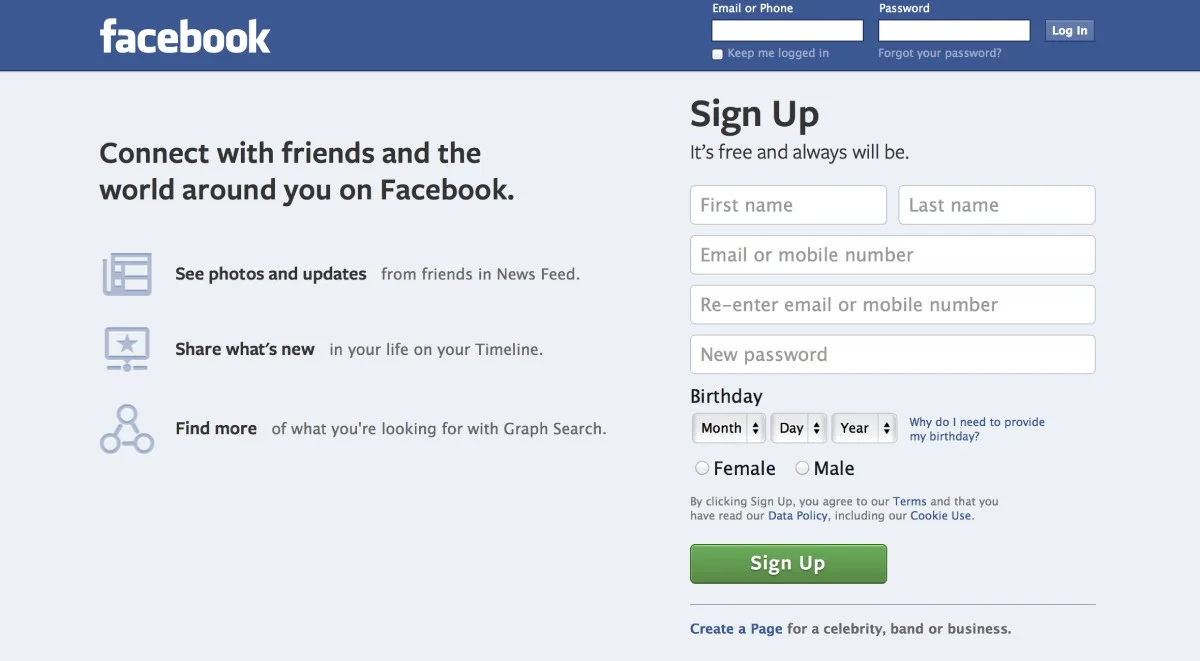
The breakthrough was well-received by the digital community and, ultimately, gave rise to some of the tech giants including Twitter, Instagram, WhatsApp, and more in addition to the names already mentioned. But this is also where the cracks started appearing in the new internet infrastructure.
The power was now getting concentrated amongst a handful of companies, especially after the continuous consolidation that followed. Google acquired YouTube. Microsoft acquired Skype (and later LinkedIn and Github). Facebook acquired Instagram and WhatsApp. A handful of institutions now determined the fate of the internet. And whenever too much power is concentrated in the hands of a few, things are bound to happen in a very particular way.
”If you’re not paying for the product, then you are the product”
- The Social Dilemma
Today, despite the majority of content being user-generated, the users neither have as much control over their data as they should have nor do they receive any monetary benefit despite being the prime source of revenue generation.
In fact, people are even tracked throughout the web. This is a serious threat to privacy. So, by the 2020s, a full-fledged, action-packed debate was on around data privacy with regulators grilling the big tech. Not much happened there – and not much is expected soon either.
➤ Web 3.0: The Read-Write-Execute Web
This brings us to Web 3.0, often described as the 'read-write-execute' web. While still in its infancy, Web 3.0 aims to address the shortcomings of Web 2.0, primarily the issues around data privacy, ownership, and control. It envisions a more democratic internet where users are in charge of their data and can interact and transact directly without intermediaries.
In a Web 3.0 ecosystem, individuals have ownership and sovereignty over their personal data. They can choose how and when to share their information, and opt for universal settings or specific settings to surf the internet. This stands in stark contrast to the current landscape, where users' data is often harvested and monetized without their explicit consent or compensation.
Web 3.0 is a permissionless (yes, it doesn’t require permissions from central authorities to access services) and trustless (removing intermediaries from virtual transactions) system largely based on blockchain technology. With blockchain's inherent characteristics of immutability and auditability, users can verify the authenticity and integrity of information and transactions. This heightened transparency reduces the potential for fraud and manipulation, enhancing trust among participants in the digital space.
Also read: The important features of blockchain technology
Another defining feature of Web 3.0 is its emphasis on interoperability. In Web 2.0, each platform operates within its own silo, making it difficult for users to seamlessly navigate between different services. Web 3.0 seeks to break down these barriers by promoting interoperability between various decentralized applications (dApps) and services. This interoperability allows for a more connected and cohesive internet experience, where users can access and utilize different platforms and services with ease.
However, while these arguments make a case for Web 3.0, is this vision realistically possible? Anyone who understands the internet infrastructure knows that different components are acting in unison to make our surfing experience delightful.
For instance, while an ISP (Internet Service Provider) is our first point of access to the internet, a DNS server acts as our phone book (mapping our entered URL to its unique IP address and providing us access to it), a CDN (Content Delivery Network) to store web resources (such as videos, images, documents, etc.) and reduce latency.
Cloud computing (and edge computing) makes it almost unnoticeable for us that intensive computing is taking place in the background (think of a simple Google search that fetches us 100s of millions of relevant results in a fraction of a second.)
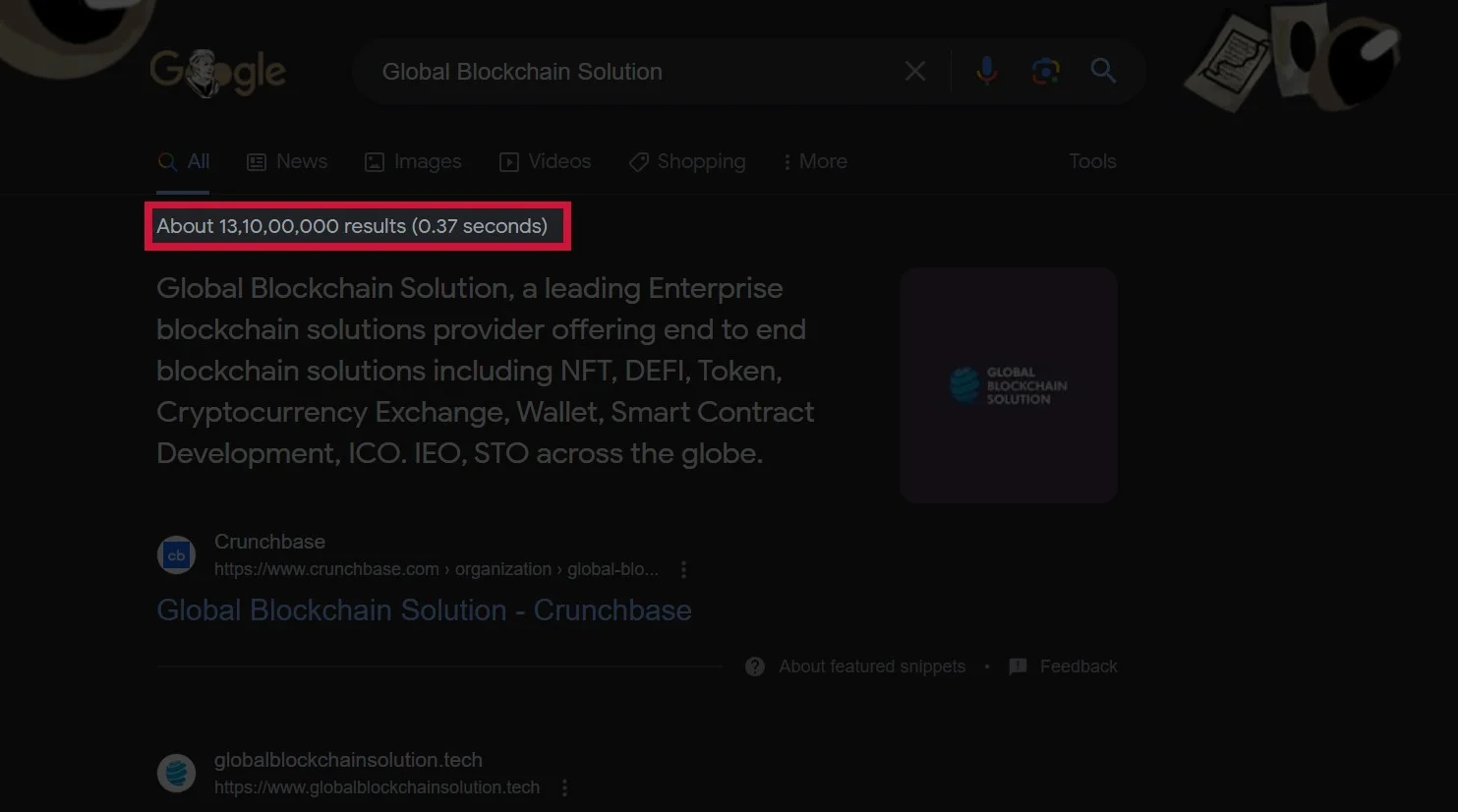
Similarly, there are databases, payment systems, cybersecurity protocols, and complex functionalities on various websites. All of this seems unfathomable to replicate as a new infrastructure.
Then, isn’t Web 3.0 just a sham? Aren’t we riding a hype bubble that will sooner or later go bust?
The Hype of Web 3.0: Waiting for an Epic Scale Disaster
To be honest, yes, there is a bubble around Web 3.0 – and a sizable one at that! As the interest around blockchain, especially cryptocurrency (and hence, crypto tokens) grows, people have been making all sorts of absurd claims and devising Ponzi schemes to make money from its hype cycle. Unaware investors are jumping into the trend and are falling victim to these scrupulous activities.
Let me give you a simple example. As mentioned above, to have a “Web 3.0 ISP”, we would need,
1. Decentralized Infrastructure
A Web 3.0 ISP would need to adopt a decentralized infrastructure to support the decentralized nature of Web 3.0. This would involve utilizing distributed systems, peer-to-peer networks, and blockchain technology to ensure a resilient and censorship-resistant network.
2. Blockchain Integration
Web 3.0 relies heavily on blockchain technology for various aspects such as decentralized identity, smart contracts, and secure transactions. A Web 3.0 ISP would need to integrate blockchain protocols to enable secure and transparent interactions between users and services.
3. Interoperability
Web 3.0 aims to create an interconnected network of data, applications, and services. An ISP operating in the Web 3.0 era would need to support interoperability standards and protocols to facilitate seamless communication and data exchange between different platforms and services.
4. Data Privacy and Security
With increased data sharing and decentralization, ensuring user privacy and security becomes paramount. A Web 3.0 ISP would need to implement robust encryption mechanisms, user-controlled data permissions, and privacy-enhancing technologies to protect user data from unauthorized access or exploitation.
5. User-Centric Approach
Web 3.0 emphasizes user empowerment and control over their data. An ISP operating in this paradigm would need to prioritize user-centric design principles, allowing users to have ownership and control over their online identities, personal data, and digital assets.
6. Distributed Content Delivery
Traditional ISPs centralize content delivery through data centers, resulting in potential bottlenecks and single points of failure. In a Web 3.0 ISP, content delivery would be distributed across a network of nodes, utilizing peer-to-peer protocols and content caching to ensure efficient and reliable content distribution.
7. Integration with Web 3.0 Services
A Web 3.0 ISP should provide seamless integration with various Web 3.0 services, such as decentralized applications (dApps), decentralized finance (DeFi) platforms, and other blockchain-based services. This integration would enable users to access and utilize these services directly through their ISP's infrastructure.
8. Community Governance
Web 3.0 embraces community-driven decision-making and governance models. A Web 3.0 ISP could implement mechanisms for community participation, such as decentralized autonomous organizations (DAOs) or token-based voting systems, allowing users to have a say in the development and operation of the ISP.
Kindly note that this is a simple representation of the basic requirements. All of these requirements are complex by themselves and need sophisticated solutions of their own. For instance, blockchain integration can only be possible if we minimize the time of its governing protocol down to single-digit (or double-digit) milliseconds. Similarly, Web 3.0 wouldn’t be possible if it isn’t legal and hence, would require DAOs that align with any country’s legal framework.
Also read: The legality of launching an ICO in the U.S.
Without realizing the need to address such granular details, many people continue to keep beating the drums around blockchain. Also, at times, Web 3.0 is spoken of in the sense that it will completely replace Web 2.0, without considering that it has taken more than two decades and mass participation for Web 2.0 to reach where it is today. Intelligent minds have solved some of the very intricate problems that earlier existed.
For instance, today, we can do video conferencing via our web browsers. Although we might think that this is because of the increased internet bandwidth, it could never have been possible without the support for the VP9 encoder and WebRTC protocol in our web browsers. Dedicated efforts were laid to develop and adopt these protocols. And, this is a very niche use case we’re speaking of. There were millions of such challenges that laid the foundation of the modern web and its underlying technologies.
Trivia: Most of the modern desktop applications are written in C and C++, the languages that were launched about half a century ago. While the adoption of new low-level languages such as Rust is increasing, the libraries written in C and C++ are simply so extensive that even today a lot of developers and companies are reluctant to switch. It’s like reinventing the wheel!
So, whenever someone makes a far-fetched claim about Web 3.0, in Global Blockchain Solution’s opinion, it does more harm than good to the community – even if the claims are made with good intentions. They only undermine the efforts of passionate blockchain enthusiasts by negatively affecting the perception (and hence, decreasing the net adoption for the current use cases.)
Also read: How to do an ICO?
So, will Web3 fail? Yes, a part of it will, especially in the way a few claims are made. But the vision to, say, have a Web 3.0 ISP isn’t an outright impossibility. And hence, with enough standards, protocols, solutions, and participation, it can provide us with a more evolved and secure internet surfing experience.
To know whether or not is Web3 the future, how to separate the wheat from the chaff? To do so, we will have to stroll back to the past.
From “Dot-Com” to “Dot-Gone”: The Fall of the Internet
The internet adoption by the late-1990s had created a similar hype cycle. “Revolutionary businesses” were popping up from all parts of the world. Everything from pet supplies to grocery items was now available online. The promise of the “touch of a button” was a game-changer.
However, it did not discount the fact that there were several major issues that needed to be worked upon. For instance, while a user from Lancaster could purchase, say, pet supplies online, shipping it from the Bay Area (without overly inflating the costs) was still a logistical challenge. Creating a “Dot-Com” website and integrating it with Paypal was not going to solve it.
Back then, the majority of people (including larger businesses and VCs) didn’t pay attention to such fine details. In fact, according to Quentin Hardy (Editorial Head, Google Cloud), a company was bought for $100 million based on a billboard. No product. No due diligence. Just pure aspiration. And the founder was let go on his third day at work while vesting his shares in full. Such was the level of ignorance.
So, it wasn’t surprising to see editorials and pieces like “Dot-Com is Dot-Gone, And the Dream With It” and “Dot-Gone: The Declining Dot-Com Industry” when the bubble burst. The industry was considered to be done and dusted with as it could “never replace the traditional way of doing business.”
And look, where we are today. Life without the internet is nearly unimaginable.
Deja-Vu: Will Web 3.0 Follow the Path of Web 2.0?
In the hullaballoo of the Dot-Com, some entrepreneurs had realistic goals and a sound business model. They focused on the overall user experience and the prevailing need gaps. Some of these names included Google, eBay, and Amazon to name a few. And, even the tsunami of the “Dot-Com Bubble” couldn’t wash them off. A lot of things would have been unimaginable had they never existed.
And, the same holds for the vision of Web 3.0. This vision would never see the light of day unless we, the ardent proponents of it, take action towards making it a reality. We have to solve the prevailing problems while staying within the constraints of the novel concept’s technological maturity. Stay away from anyone who makes absurd claims.
In doing so and creating a sound business model that solves an actual problem that people and businesses face, companies in the realm of Web 3.0 can become the Googles and Amazons of tomorrow. Even a disaster of epic scale cannot decimate them.
Conclusion
At last, remember, Web 3.0 is not about replacing Web 2.0 altogether but about enriching and expanding its purview. A lot of intelligent people have solved a lot of challenges that earlier existed before us. Now, it’s time for us to take their feats a notch higher and align everything with the vision of the Web 3.0 future.
There are a lot of interesting projects already ongoing in the Web 3.0 space. It will be interesting to see how the industry evolves and matures over the next couple of years and decades.
If you want to develop a solution that can be a game-changer in Web 3.0, feel free to pick our brains on how to develop it. Contact us via call, WhatsApp, email, or Telegram. We are passionate about Web 3.0 and will be happy to help.

